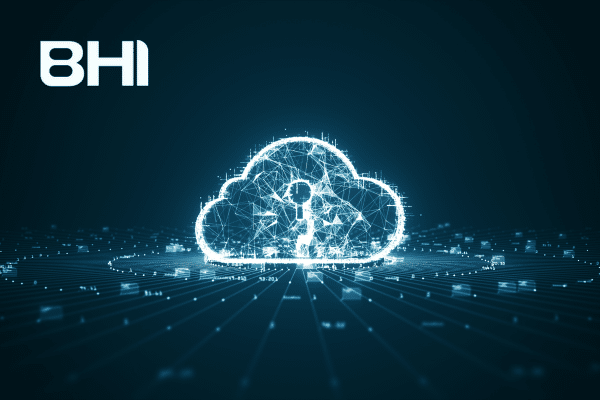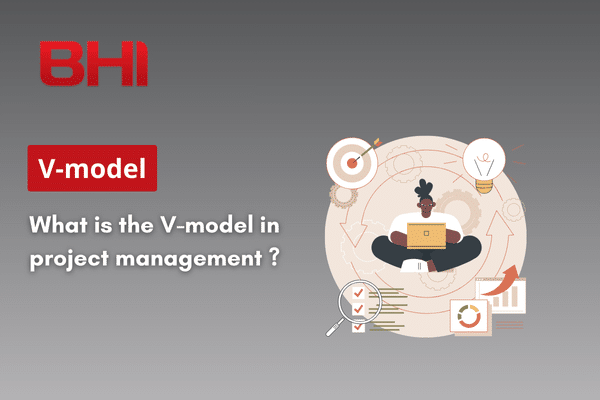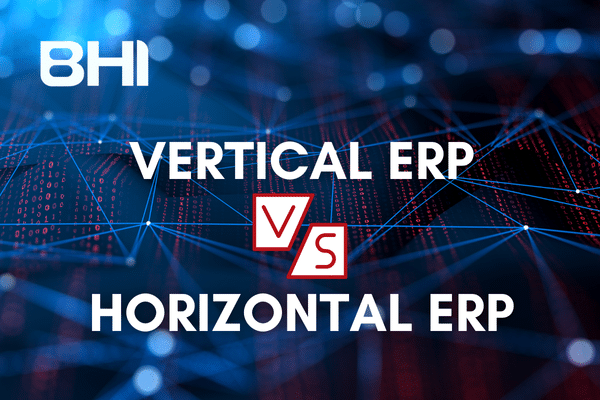The growing adoption of multi-cloud environments has transformed the way companies manage their IT resources, particularly ERP (Enterprise Resource Planning) systems. By combining multiple cloud service providers, companies benefit from flexibility, scalability and resilience. However, this approach also introduces complex security challenges, including management of sensitive data, regulatory compliance and protection against cyber-attacks.
In this article, we’ll explore best practices for mastering ERP security in a multi-cloud environment. We’ll discuss the potential risks, and the tools you need to put in place to ensure optimum protection of your ERP systems while maximizing the multi-cloud benefits.
What is a Multicloud Environment ?
A multi-cloud environment refers to the use of multiple cloud service providers, such as Amazon Web Services (AWS), Microsoft Azure, Google Cloud, or private clouds, to host different parts of a company’s IT infrastructure. This approach diversifies risks, optimizes costs, and leverages the specific features of each provider.
Advantages of Multicloud
First and foremost, it offers increased resilience by distributing workloads across multiple clouds, thereby reducing the risk of downtime. Flexibility is also a major advantage, as each provider offers unique services, enabling businesses to choose the best solutions for their specific needs. Cost optimization is another significant advantage, as companies can compare prices and services to reduce their infrastructure expenses. Finally, this approach avoids vendor lock-in, reducing dependency on a single provider.
Multicloud challenges
Management complexity is one of the main obstacles, as coordinating multiple providers can prove difficult, particularly in terms of security and compliance. Security risks are also heightened, as each cloud has its own security protocols, which can complicate the implementation of a unified security strategy. Limited visibility of all activities and data spread across multiple clouds is another major challenge. Finally, data integration between different cloud environments can be complex, requiring additional efforts to ensure information consistency and integrity.
Security risks for multi-cloud ERP systems
ERP systems are at the heart of a company’s operations, managing critical information such as financial data, human resources, and production processes. In a multicloud environment, these systems are exposed to a number of security risks :
-
Data breaches
Data breaches are one of the main concerns for companies using ERP systems in a multi-cloud environment. Sensitive data can be compromised if adequate security measures are not put in place.
-
Regulatory compliance
Companies must comply with various regulations, such as the RGPD (General Data Protection Regulation) in Europe, which imposes strict data protection requirements. Failure to comply with these regulations can result in substantial fines.
-
Access management
Access management is becoming more complex. It is essential to ensure that only authorized users can access ERP systems, and that access rights are properly managed.
-
Ransomware attacks
Ransomware attacks are becoming increasingly common and can cripple ERP systems, leading to financial losses and business interruptions. Companies need to implement robust protection measures to guard against these attacks.
-
API vulnerabilities
APIs (Application Programming Interfaces) are essential for integrating ERP systems in a multi-cloud environment. However, they can also be a source of vulnerabilities if not properly secured.
Essential Tools for Multicloud ERP Security
-
Cloud Access Security Brokers (CASB)
CASBs are tools for monitoring and controlling access to cloud services. They provide visibility into user activities, and can enforce security policies to protect sensitive data.
-
Key Management Solutions (KMS)
Key management solutions enable the management of encryption keys used to protect data in a multi-cloud environment. These solutions ensure that keys are securely stored and accessible only to authorized users.
-
Web Application Firewall (WAF)
A web application firewall protects ERP systems against web-based attacks, such as SQL injections and Denial of Service (DDoS) attacks. It is essential to use a WAF to protect the web interfaces of ERP systems.
-
Vulnerability Management Tools
Vulnerability management tools identify and correct security vulnerabilities in ERP systems. These tools regularly scan cloud environments to detect vulnerabilities and provide recommendations for correction.
-
Data Loss Prevention (DLP) solutions
DLP tools help prevent the leakage of sensitive data by monitoring and controlling data transfer, whether inside or outside the organization.
Best Practices for ERP Multicloud Security
1. Adopt a Zero Trust Approach
The Zero Trust approach is based on the principle that no-one, either inside or outside the network, should automatically be considered trustworthy. Every user and every device must be authenticated and authorized before accessing ERP systems.
2. Segmenting networks
Network segmentation limits the spread of threats by isolating different parts of the infrastructure. By segmenting networks, companies can better protect their ERP systems against attacks.
3. Train employees in security
Employee training is essential to prevent human error, which is often at the root of security breaches. Companies need to make their employees aware of good security practices, such as using strong passwords and recognizing phishing attempts.
4. Implement an Incident Response Plan
A well-defined incident response plan ensures rapid reaction in the event of a security breach. This plan should include procedures for identifying, containing and resolving security incidents, as well as for communicating with stakeholders.
Future trends and emerging technologies
The future of ERP security in multi-cloud environments is moving towards ever more integrated and adaptive solutions. Cloud-Native Security is a major trend that aims to integrate security directly into the cloud infrastructure. This approach includes the use of managed security services by cloud providers, the adoption of secure containers and microservices, and the integration of DevSecOps practices to incorporate security throughout the application development lifecycle. This evolution enables better adaptation to dynamic multi-cloud environments and faster response to emerging threats.
Blockchain technology also offers interesting prospects for security, as it can improve traceability of transactions and access, reinforce data integrity, and increase trust between different stakeholders. The use of blockchain could, for example, create an immutable record of accesses and modifications to ERP data across different clouds, facilitating security audits and the detection of suspicious activity.
Artificial intelligence and machine learning are playing a growing role in multi-cloud ERP security. These technologies can be used to detect anomalies and suspicious behavior in real time, enabling a faster response to potential threats. They can also help automate certain aspects of security management, such as enforcing security policies or dynamically adjusting access controls according to context.
Conclusion
Security is a complex challenge, but one that is essential to protecting business-critical data. By adopting a proactive approach and implementing robust security strategies, companies can leverage the benefits of the multi-cloud while minimizing risks. The key to success lies in a combination of advanced technologies, good management practices and ongoing employee training.
Security relies on continuous innovation, adaptation to new threats and collaboration between the various players in the technological ecosystem. By keeping abreast of the latest trends and investing in the right solutions, businesses can take full advantage of the benefits of the multi-cloud while minimizing risks.
Don’t forget that security is a continuous process. Regularly evaluate your security strategy, conduct frequent audits and be ready to adapt quickly to changes in the threat landscape. By taking a holistic approach to security, businesses can create a secure, resilient environment capable of supporting long-term growth.
To find out more, explore the security solutions offered by leading cloud providers, and make sure you stay up to date with the latest cybersecurity trends. The security of your ERP in a multi-cloud environment is your company’s long-term investment, guaranteeing business continuity and the trust of your customers and partners. Contact us for personalized advice on securing your multi-cloud environment and protecting your critical data.

















